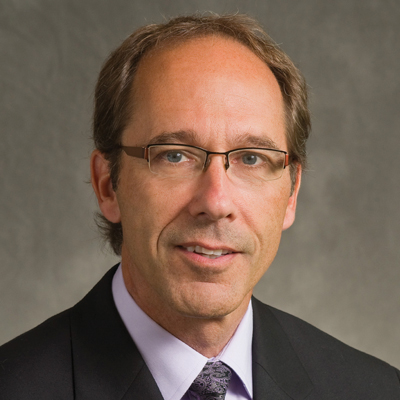When Lawrence Lindsey accepted the post as head of the Bush administration's National Economic Council, it meant he had come full circle in his service as an economic policymaker in Washington. His first stint on the fiscal policy side came as a member of President Reagan's Council of Economic Advisers, followed by service under the first Bush administration as a special assistant to the president on policy development. Lindsey then moved to the monetary side when he was nominated to serve on the Federal Reserve's Board of Governors—where he worked from 1991-97—and now, of course, he has returned to the White House and fiscal policy.
Early in his tenure at the Federal Reserve, The Region magazine sat down for an interview with Lindsey, and we thought it would be valuable to revisit the president's top economic adviser and re-examine some issues raised in our earlier meeting. This conversation occurred in early March 2001.
Tax policy as economic stimulus?
One of the biggest economic issues on the new administration's table regards tax policy, an issue made all the more urgent by the recent slowing of the economy and the debate over the need for a stimulus. Eight years ago, in his first interview with The Region, Lindsey spoke of the need to lower tax rates and to broaden the tax base by eliminating loopholes, a message that is not dissimilar from his views today. Lower tax rates are clearly a matter of principle to Lindsey, and not some ad hoc reaction to a slowing economy. When asked if the current administration's tax policy might be dependent on a reading of the economy's strength, Lindsey's response was adamant: "It's not dependent at all. We deliberately put together a plan that was good no matter what the economic circumstances were."
Lindsey described a tax scenario whereby a single mother with two children and earning $25,000 would, because of the interaction of various tax rates, only get to keep 50 percent of any raise she might earn. Whether the economy is in a boom or bust, having a single mom in that situation doesn't make sense, he said. "And the marriage penalty doesn't make much sense. The death tax doesn't make much sense. It's a major impediment to capital formation."
That doesn't mean, of course, that the administration hasn't been willing to consider tax policy as a possible stimulus to the economy, Lindsey said. It's just that the focus of the plan is much broader and deeper than a reaction to current events. "The details of the president's plan were sound regardless of the business cycle."
A tale of two expansions
Lindsey's experience, with views on the economic scene from both the White House and the Federal Reserve, and which spans two lengthy economic expansions, gives him a unique insight into how the U.S. economy works. In 1993, with the economy coming out of a recession and with the 1980s expansion under review, Lindsey gave the majority of the credit for the previous decade's growth to the prevalence of supply-side ideas over those relating to Keynesianism.
Those supply-side ideas continue to have influence, Lindsey maintained in his recent interview, and are largely responsible for the expansion of the 1990s. He gives credit to four main ideas that have had a beneficial impact on the U.S. economy, all with their genesis in the early 1980s. First, there has been a growing respect for markets and an increasing understanding of the deleterious impacts of regulation. Second, the Federal Reserve's efforts to bring inflation down in the early 1980s—and its subsequent low-inflation policy—have been recognized by each succeeding presidential administration as fundamental to economic growth. Presidents Reagan, Bush and Clinton all supported low-inflation monetary policies, as does the current president. "That was a big change from the general policy view that dominated the administration of the late 1970s," Lindsey said.
The third idea important to the expansions of the previous two decades is the recognition of the need for more modest tax levels. The top rate in 1980 was 70 percent, Lindsey recalled, compared to today's top effective rate of 44 percent. "Now, we still think that's high, but it's not 70," he said. President Bush's proposed tax cut is only one-third the size of President Reagan's, relative to gross domestic product (GDP), according to Lindsey, and only half the size of President Kennedy's, relative to GDP. "So we're making more of a midcourse correction in tax policy," he said. Finally, Lindsey credits the increasing acceptance of free trade principles.
"So, open markets in the form of less regulation, low inflation policy, relatively modest taxation and free trade dominated both decades," Lindsey said. "In 1981, those were called the four pillars of Reaganonomics, and I found it interesting that when I debated former Fed Vice Chairman Alan Blinder during the [recent] presidential campaign, he thought those were just fine with him today."
Policy here, policy there
As the leader of the president's National Economic Council, Lindsey's duties are essentially threefold:
- coordinate the economic policymaking process with respect to domestic and international economic issues;
- ensure that the economic policy decisions and programs are consistent with the president's stated goals;
- and monitor implementation of the president's economic policy agenda.
In practice, Lindsey said, that means trying to get the various agencies of the government together to form a consensus on a particular issue, but if that fails, then make an honest presentation of all sides—including the views of the council. "We have to be an honest broker, but we also—after being an honest broker—have to give our opinion."
Giving an opinion was also one of Lindsey's roles during his service on the Federal Reserve's Board of Governors, but it was an opinion that was shaped much more deliberately than at the White House, where day-to-day issues require immediate attention and focus. When asked to compare the two arms of economic policymaking, the time allowed for research and analysis was the key difference that Lindsey cited. At the Federal Reserve, more time is given to consider policy alternatives—perhaps because formal decision making is generally reserved for Federal Open Market Committee meetings, which occur roughly every six weeks.
Today, Lindsey's days begin with a meeting of senior White House staff in the West Wing's Roosevelt Room, and they often end with a consultation with the president. "It's a much more rapid pace, and the variety of issues is much greater," Lindsey said.
Watch the real economy, not the TV economy
On a final note, Lindsey addressed a question regarding the influence of the media in perpetuating bad economic news and, thereby, through a sort of self-fulfilling prophecy, generating even more bad outcomes, which begets more bad news, and so forth. This idea of the media's prophetic self-fulfillment has gained acceptance—at least insofar as it can shape consumers' reactions to the economy—but it's a notion that Lindsey dismisses.
"I really don't think that expectations are shaped by what people see on TV," he said. "I mean, if they were, they'd be schizophrenic, right? You've got half the people telling you to be wildly optimistic, and half telling you to be wildly pessimistic."
Lindsey said that people reflect on their own situation when making
assessments of the economy; if too many people are having negative experiences
at a given time, either through job insecurity or a downturn in business,
then that accumulated experience will drive reactions. Rather than getting
caught up in the deluge of market reports and data and so-called analysis
that is instantly available, people should just stay focused on their
own situations, he advised. The macro economy will take care of itself.





